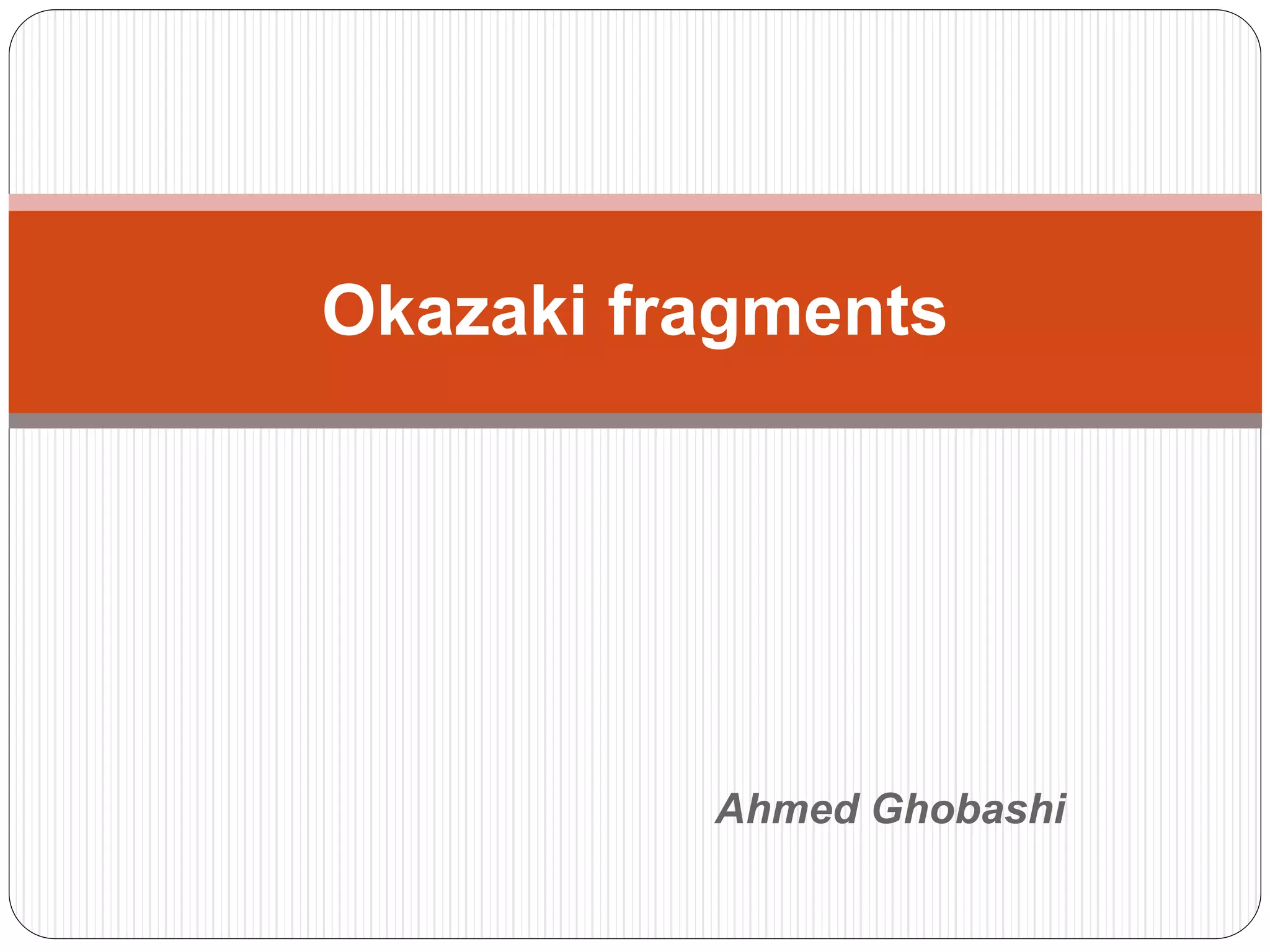Embed presentation
Downloaded 57 times




Okazaki fragments are short, newly synthesized DNA fragments formed on the lagging template strand during DNA replication. They are between 1000-2000 nucleotides long in E. coli and approximately 150 nucleotides long in eukaryotes, separated by RNA primers. The RNA primers are removed and DNA ligase connects the Okazaki fragments into a continuous complementary strand.



